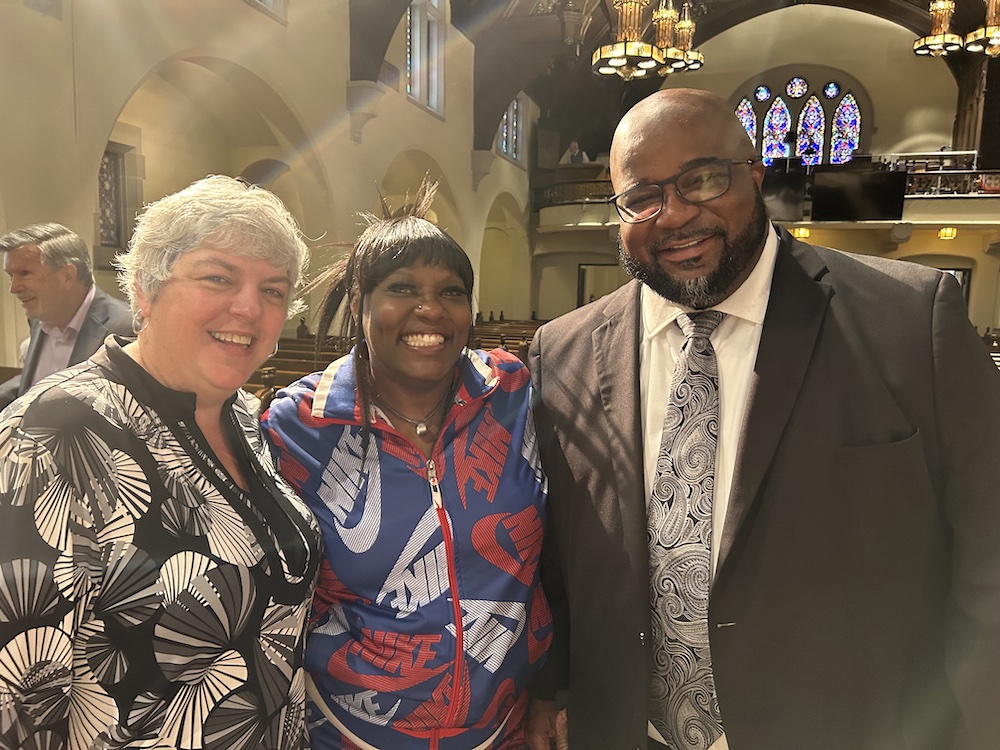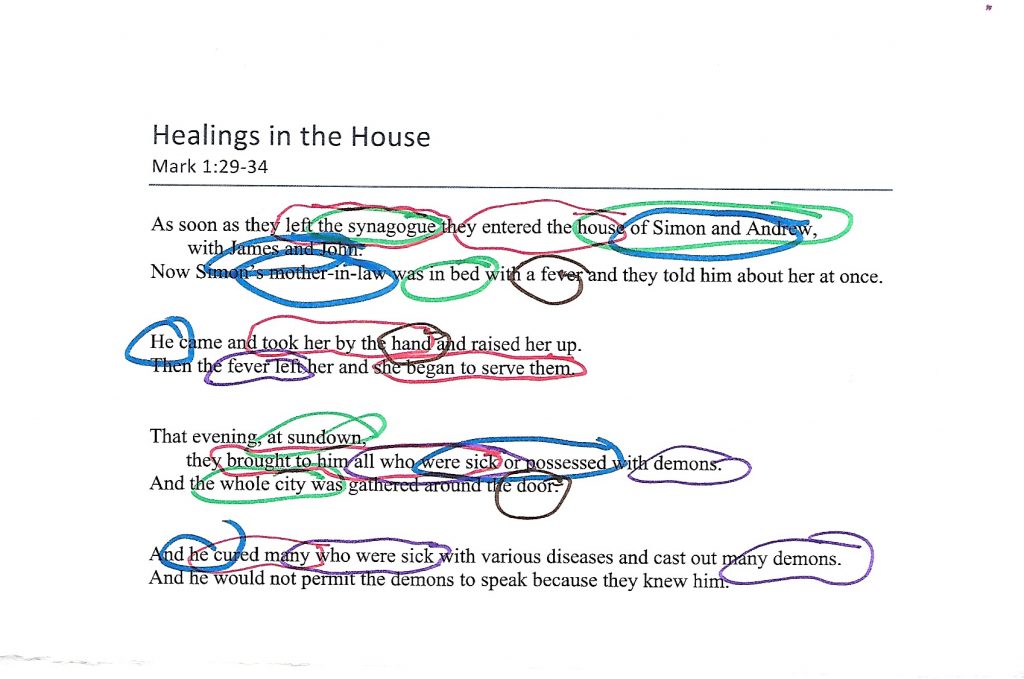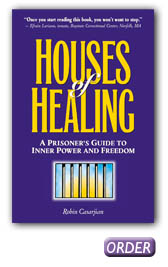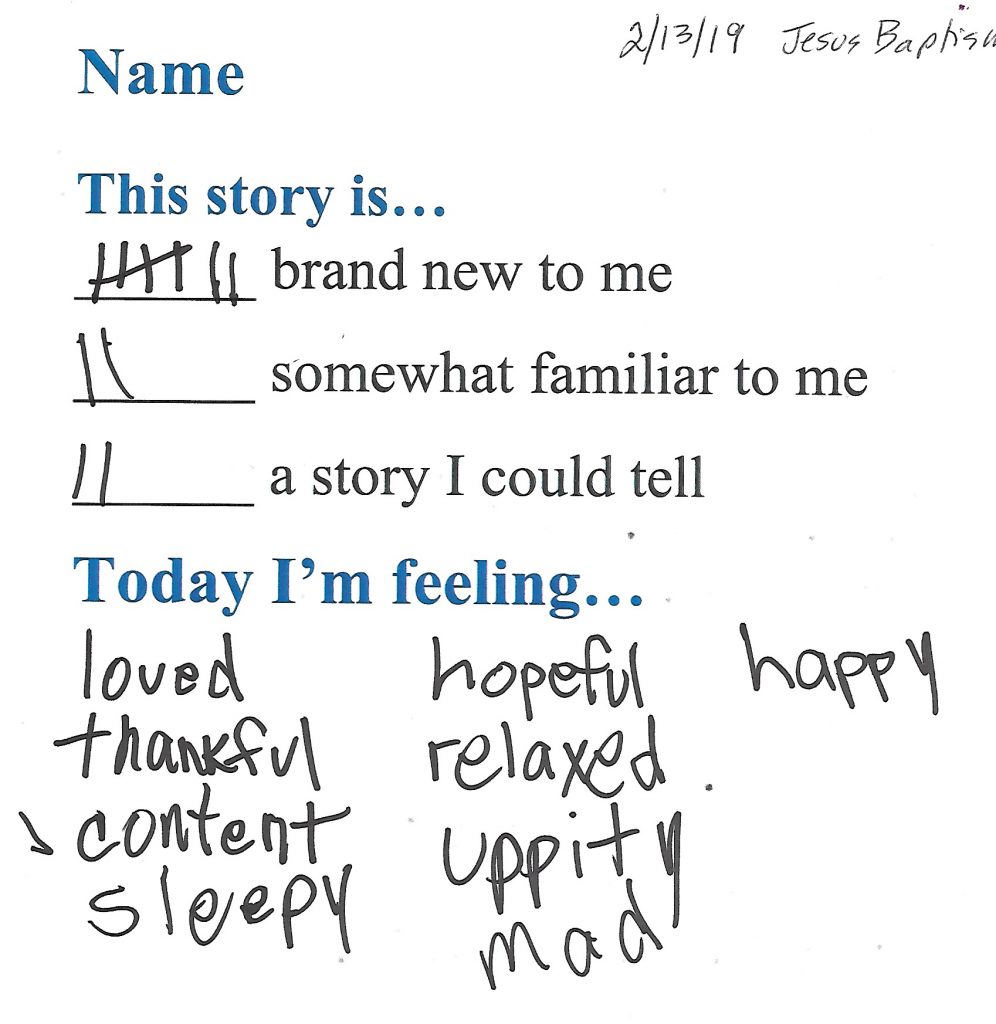We were supposed to start up again last week after a three-month break, but it didn’t happen because I forgot to remind the chaplain and he forgot we were coming. The series is “The Risen Christ: John 20 and Acts 16.” Seemed like a good Easter season theme. The plan is four weeks on each of the two chapters.
So, we bumped the schedule forward a week, and after our false start, finally got started with Sacred Stories this week.
But it was not a smooth take-off. First of all we were about fifteen minutes late for our 1:00 start time. Then we were told at the desk class would be in W21 (that big former pod). So we went there and waited. Finally a CO came but didn’t let us in, made a call. Then we find out the chaplain has the women up on the fourth floor so we go up there.
Now it is already 1:30 but we do get going and things are going along well with good participation, sharing, questions (“What is a disciple?”) and connections being made to the story. Suddenly at 2:00 there’s knocking on the door. Two CO’s are there with a line of men and a couple of women. They tell us they have video court and we have to be out in two minutes and they don’t know where we should go.
We scramble to pick everything up (we have a lot of stuff out at that point) and by the time we leave (in under two minutes) they’ve decided to take us back to W21.
So we retrace our steps down two floors, through two heavy doors and a couple of hallways, over to the old side of the jail. In W21 there’s water on the floor and two things that look like rowboats to catch the drips—Sea of Galilee images come to mind.
We go past all that and set up circle (again) at the back of the big space. And we continue. Thankfully my co-circlekeeper recalled where we were and who was about to tell us why her “Word I Heard” phrase connected with her feeling of being “upset” which she had named at check-in.
After everyone had a chance to talk about their “Word I Heard” in the second telling of the story (John 20:1-10), we did a read-around of “About the Story,” Then we acted it out, turning our circle into the tomb with linen cloth in one place and “the cloth covering Jesus’ face” in another. We identified a space around the boat-catching-leaks for the disciple’s house. One woman narrated (read) and gave stage directions to the women portraying Mary, Peter, and “the other disciple whom Jesus loved.”
All that back and forth to the tomb was eerily like all the back and forth we had done between the pod and the fourth floor classroom. The young woman who was Mary Magdalene, when she read in “About the Story” that one of the versions of Mary’s story says she has seven demons, said that was like her and she’d like Jesus to get the demons out like he did for Mary.
I told the women we’d act out the story again next week and continue with the next part of John 20. The young woman who was Mary said she wanted to be Mary every time. I said she’d have to learn her lines by heart There was only one spoken line in this week’s story; next week will be more of a challenge. Everybody said they’d be back. We’ll see…




